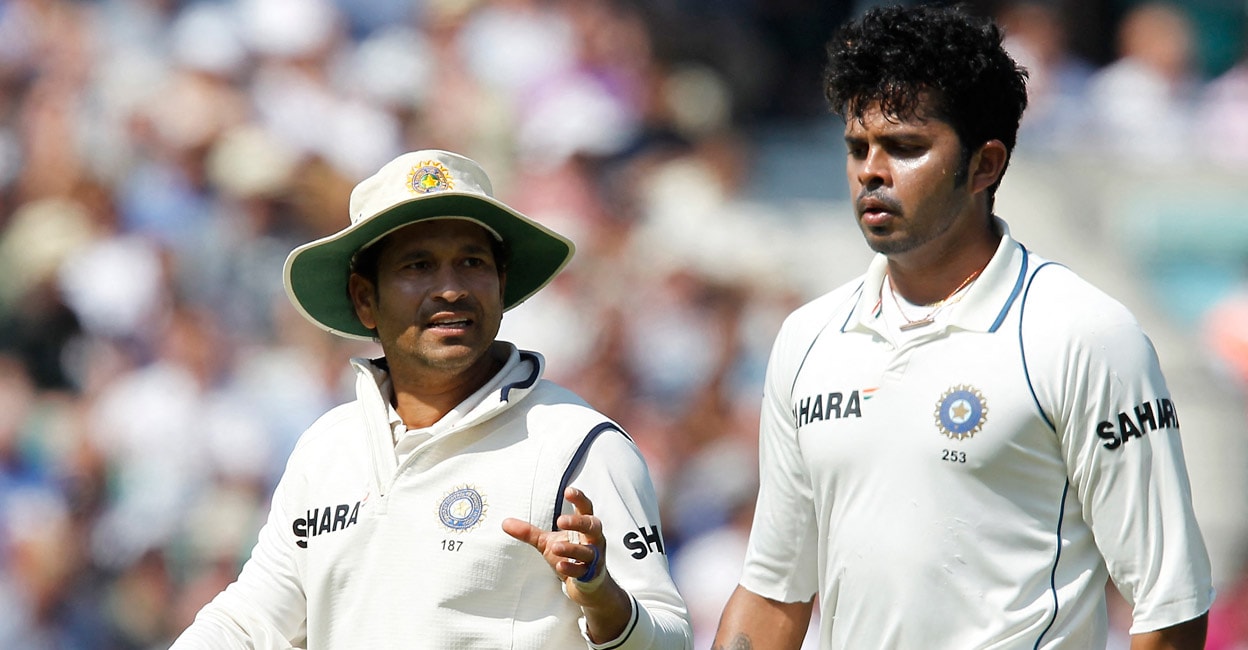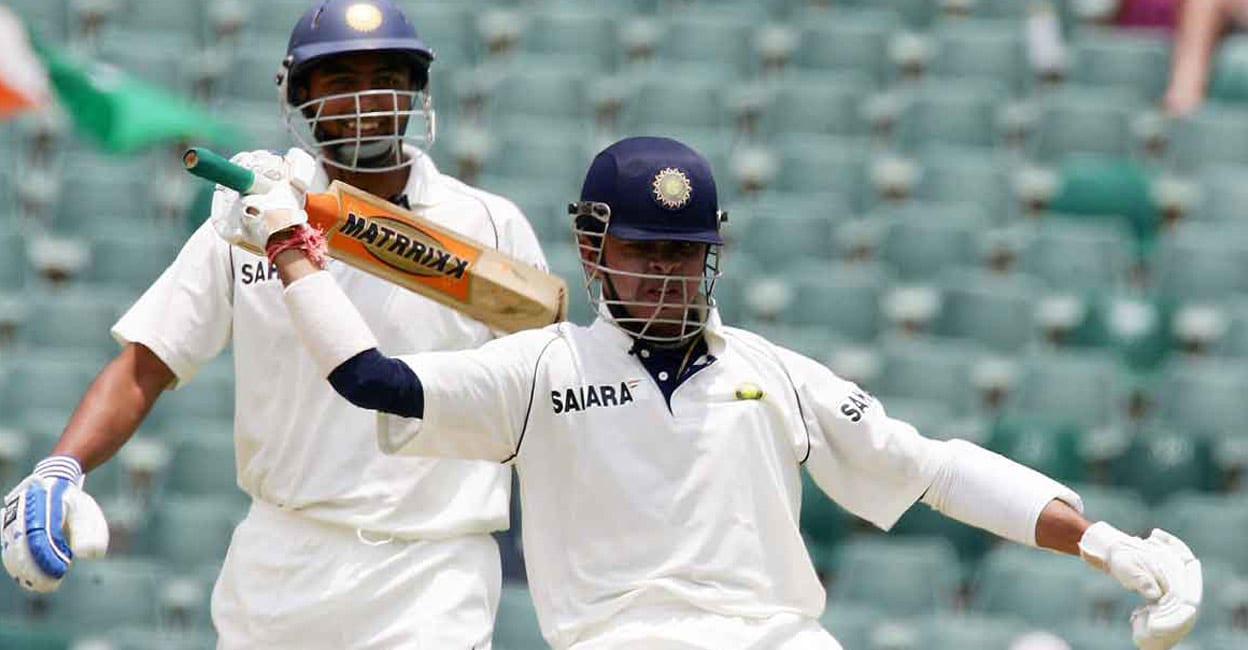Column | Sreesanth – the quintessential fighter

Mail This Article
While penning an obituary to Shane Warne a renowned cricket observer from India remarked that the success of the legendary leg-spinner owed as much to the ability of Australian cricket to understand and incorporate nonconforming cricketers into its fold as the prodigious talent he was blessed with. He also compared the career of Warne with the relatively short tenures of Vinod Kambli and Sadanand Viswanath to point out that Indian system, during the last century, did not take kindly to players who did not fit into the profile cut out for them by the administrators. The article concluded with the observation that things improved once Sourav Ganguly and Mahendra Singh Dhoni took over the reins of captaincy as they were more considerate towards players like Harbhajan Singh who were not amenable to discipline in the classical sense.
The retirement of S Sreesanth from first-class cricket last week again brings to the fore the question of tolerance levels of Indian cricket establishment towards “enfant terribles" in their midst. Sreesanth was an extraordinary cricketer who needed to be handled in a manner different from the rest. This was obvious from the time he burst on the domestic cricket scene in the early 2000s. He was a fast bowler from Kerala, a state where most of the cricket used to be played on matting wickets and exposure to turf pitches took place only during inter-state games hosted by the Board of Control for Cricket in India (BCCI). However, a stint with the MRF Pace Foundation sharpened his skills and fitness levels and he started knocking on the doors of the national team. A brilliant performance in the Challenger Trophy in 2005 earned him the call-up to the national side where he established himself quickly with some outstanding performances.
It was Sreesanth’s good fortunes that the persons who guided the MRF Pace Foundation and Indian team during this period were both Aussies. Dennis Lillee was impressed by the talent and work ethic of this strapping youngster from Kerala but he was more enamoured by his attitude towards the game. Sreesanth was an aggressive fast bowler who played the game hard without yielding a quarter. He did not bother about the reputation of the opponent nor did he indulge in any show of elaborate respect to a senior player on the field of play. He went about his job in a focussed way with the sole aim of dismissing batsmen. This was more in line with the “Aussie way” of playing the game hard where all members of the team are treated as equal and called “mates”. Hence Lillee and Greg Chappell were able to guide and mentor him during his early years, when he achieved remarkable success.
However, this approach had the potential to create plenty of heartburn in dressing rooms in India where hierarchy rules the roost and any attempt at considering senior players as equals, even on the field, is considered not merely as disrespect but as downright blasphemy. Hence it was no surprise that many within his own camp did not see eye to eye with Sreesanth. The shoulder charge by Harbhajan Singh and the 'Slapgate' incident need to be seen from this perspective, as actions intended to show a young “upstart” his place. It is to Sreesanth’s credit that he was able to put these incidents behind him and force a comeback to the national side. The combination of Gary Kirsten, a no nonsense South African, who had taken over as coach by this time, and skipper Dhoni ensured that he would be judged on performance alone and not based on other aspects.

Sreesanth was also unlucky in that injuries played havoc with his career at two crucial stages. The first happened just prior to the tour of national side to in December, 2007. Going by his record in South Africa, it is safe to assume that he would have found the pitches and conditions in Australia to his liking and done well in this country. Though he returned to the team for the tri-nation limited overs championship that India won defeating the hosts in the finals, he could not get an opportunity to play Test matches in Australia during his career. The next was the injury to the foot that he suffered during the tour of England in 2011, which kept him out of the game for the next year and the half. He returned to first-class cricket in January, 2013, and was trying hard to return to the national squad when disaster struck, this time in the form of allegations of taking money from a bookie to underperform in the IPL.
The case against Sreesanth that he colluded with bookies to concede more than 14 runs in an over in a game in an IPL game was dismissed by the trial court. But the BCCI stuck to their guns that their decision to ban him for life from the game after a hurriedly conducted enquiry could not be revisited. It was only after intervention by the Courts that the BCCI relented and reduced the period of ban to seven years. Sreesanth kept his head down, steered clear of controversies and worked hard to maintain his peak physical fitness during this period of forced break from the game. The outbreak of COVID-19 pandemic and the consequent lockdown that disrupted domestic cricket delayed his return by anther year. Though he played for Kerala in both Ranji Trophy and limited overs matches after his return, he was not considered by any of teams during the IPL auction. It appeared as though none of the teams wished to have him in their camp.
It was Sreesanth’s singular misfortune that his aggression inside the field of play was projected by the media in a negative manner to give him all pervasive “bad boy” image, which was not only unfair to the player and untrue factually as well. It should be remembered Sreesanth’s combative behaviour was always directed at the batsmen and intended to unsettle them. Old timers and the prudes might shake their heads in disapproval at some of his antics on the field but it should not be forgotten that he invariably succeeded in rattling the batsmen and led them to their doom. No one had ever accused him of behaving badly on any occasion outside the playing arena. There were players who were guilty of grave misdemeanours on and off the field and got away with it lightly and more importantly, without being stuck with the tag of a bad boy. The final analysis would show that Sreesanth was more sinned against than sinned in this regard.

There are many pictures of Sreesanth that come to mind when one looks back on his career. The brilliant bowling in Pakistan in 2006, the match-winning spell against South Africa in Johannesburg in 2006, the war dance after hitting Andre Nel for a six, the spells in ICC T20 championship especially against Australia in semifinals, the catch to dismiss Misbah-ul-Haq in the final and the killer delivery that dismissed Jacques Kallis and set India on the road to a victory at Durban in 2010. The tally of 87 wickets in Test matches and 75 scalps in One-Day Internationals (ODIs) do not reflect the impact that he created on the batsmen. In many ways, he was the first fast bowler who symbolised the new Indian spirit where one is not afraid to stand up and give back in full measure without feeling either intimidated or apologetic.
The hurt caused by the continued rejection by cricketing establishment despite his earnest efforts to come back to the game after the long wait of nine years must have been one of the reasons that prompted Sreesanth to call it a day. The inability of his 39-year-old body to keep pace with a mind that was two decades younger could be another. Sreesanth would have known that his chances of getting back to the national side after this long recess from the game were remote. He might even have anticipated the cold response of top honchos of the BCCI and team managers of IPL to his comeback. But he had to do it to prove to the entire world that he possessed the drive and determination to bring himself back into the reckoning, despite the immensely superior forces ranged against him. This never say die attitude will remain Sreesanth’s legacy to Indian cricket.
Well played, Sree! You made us proud with your performances with the cricket ball. Wish you good luck in your future endeavours in life.
(The author is a former international cricket umpire and a senior bureaucrat)


